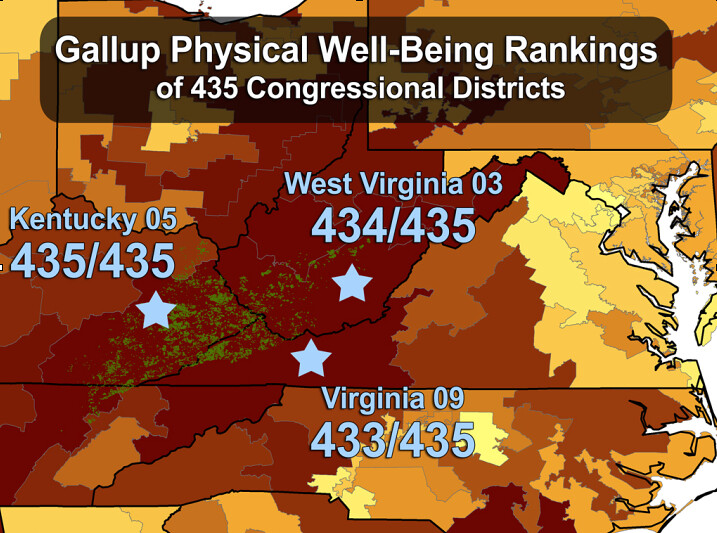 Last April, the EPA announced new guidance standards for new and pending surface mine permits in Appalachia. EPA Administrator Lisa Jackson stated “Coal communities should not have to sacrifice their environment or their health or their economic future to mountaintop mining. They deserve the full protection of our clean water laws.” The Administrator proclaimed “You’re talking about no or very few valley fills that are going to meet standards like this.”
Last April, the EPA announced new guidance standards for new and pending surface mine permits in Appalachia. EPA Administrator Lisa Jackson stated “Coal communities should not have to sacrifice their environment or their health or their economic future to mountaintop mining. They deserve the full protection of our clean water laws.” The Administrator proclaimed “You’re talking about no or very few valley fills that are going to meet standards like this.”
While Jackson made it clear that the new guidance would not ban all mountaintop removal, the guidance and the Administrator’s strong statements, it seemed, did move Appalachia one step closer to the just and sustainable future our region needs and deserves.
Last week, though, the EPA quietly made its first decision under the new guidelines and APPROVED a permit allowing three new valley fills in Logan County, West Virginia.
In other words:
They’re still blowing up our mountains, and we still need a law.
The EPA approved Pine Creek Strip Mine would impact over two MILES of already suffering headwater streams, create three new valley fills (each over 40 acres), and further endanger local communities already suffering from increased flooding due to strip mining. As deforestation on the Arch Coal mine site would continue to dismantle an important global carbon sink, the mine itself would produce over 14 million tons of coal, which when burned in power plants, would contribute over 40 million tonnes of carbon dioxide greenhouse gas pollution to the planet’s atmosphere.
Vivian Stockman of Logan County, West Virginia expresses frustration with the agency: “In approving the Pine Creek permit, the EPA has failed our community. Any more mountaintop removal mining in Logan County is going to further degrade the watershed, increase pollution-related health impacts and increase the likelihood of more flooding.”
Again, we need a law. In this April Huffington Post piece, Matt Wasson, Director of Programs for Appalachian Voices, outlined 5 reasons for the need:
1. The EPA’s action will not affect permits that have already been issued. Moreover, an excellent piece of reporting by Charleston Gazette reporter Ken Ward revealed that those existing permits will allow some companies to continue mountaintop removal operations without a hitch for the next couple of years.
2. Not all mountaintop removal mines require valley fills and coal companies are already using loopholes by which they can obliterate miles of streams without the need to obtain a valley fill permit. The million or so acres of wholesale destruction that coal companies drove through a narrow loophole in the Surface Mine Control and Reclamation Act since 1977 is testament to their skill and creativity at exploiting loopholes.
3. Some valley fills will still be allowed under this guidance and the EPA even provided a set of “best practices” by which companies can do mountaintop removal in a manner consistent with it. Moreover, there are a number of recent cases where coal companies went ahead and constructed valley fills without even bothering to obtain a permit.
4. While the guidance takes effect immediately, it is a preliminary document released in response to calls from coal state legislators and coal companies for greater clarity on how the EPA was basing its decision whether to grant a valley fill permit for an Appalachian surface mine. The EPA plans to initiate an extended public comment period before the guidelines will be finalized.
5. An agency guidance document is different from a formal rule and can be easily overturned by a new administration. Even if this guidance proves to be effective in curtailing mountaintop removal, environmental and community advocates still need to ask what happens when a hypothetical President Palin enters the White House in January of 2013 or 2017.
Please take a moment to ask your Congressman to support two bipartisan bills aimed at sharply curtailing mountaintop removal: the Clean Water Protection Act (HR 1310) in the House and the Appalachia Restoration Act (S 696) in the Senate. The health and heritage of Appalachia is at stake, where a “few valley fills” is a few too many.





 Senator Robert C. Byrd (D-WV) passed away early this morning at the age of 92. Senator Byrd is the longest serving member of the United States Congress in American history, and as the Senate’s “President Pro Tempore,” Senator Byrd was third in line to the Presidency. According to this website, he cast more than 18,680 roll call votes — more votes than any other Senator in American history — compiling an amazing 97 percent attendance record in his more than five decades of service in the Senate. He ran for office 15 times and never once lost a race.
Senator Robert C. Byrd (D-WV) passed away early this morning at the age of 92. Senator Byrd is the longest serving member of the United States Congress in American history, and as the Senate’s “President Pro Tempore,” Senator Byrd was third in line to the Presidency. According to this website, he cast more than 18,680 roll call votes — more votes than any other Senator in American history — compiling an amazing 97 percent attendance record in his more than five decades of service in the Senate. He ran for office 15 times and never once lost a race. 


 Senator Mikulski serves on the; Appropriations Committee where she is the chairwoman of the Commerce, Justice, Science, and Related Agencies subcommittee, Health, Education, Labor, and Pensions Committee where she is the chairwoman of the Retirement and Aging subcommittee, and the Select Committee on Intelligence.
Senator Mikulski serves on the; Appropriations Committee where she is the chairwoman of the Commerce, Justice, Science, and Related Agencies subcommittee, Health, Education, Labor, and Pensions Committee where she is the chairwoman of the Retirement and Aging subcommittee, and the Select Committee on Intelligence. Mounting evidence shows mountaintop removal is detrimental to the
Mounting evidence shows mountaintop removal is detrimental to the 




 The US Army Corps of Engineers has decided to suspend the “streamlined” Nationwide Permit 21 in Appalachia.
The US Army Corps of Engineers has decided to suspend the “streamlined” Nationwide Permit 21 in Appalachia.